Table of Contents
SIGMACLAD
Lithium-ion batteries are increasingly being used to power electric vehicles, power tools, and other electronic devices. They have enabled electric vehicles with longer ranges and faster charging, but safety still remains a concern.
In a lithium-ion battery pack, hundreds or thousands of individual cells need to be connected together in series and parallel configurations to produce the required voltage and capacity. Battery interconnects, also known as busbars, are the conductive metal components that link the positive and negative terminals of the battery cells to complete the electrical circuits within the pack. The interconnects carry high electrical current between the cells and hence, must have low resistivity to minimize resistive heating. They also need to dissipate heat effectively to prevent localized hot spots.
Traditionally materials like nickel and nickel-plated steel that are utilized for cell interconnects pose challenges due to their low thermal and electrical conductivity. This can lead to issues like overheating, reduced battery efficiency, and shorter lifespan. Overheating of battery packs can lead to thermal runaway and potential fires.
Engineered Materials Solutions (EMS) (represented by Panbase Resources Pvt. Ltd. In India) has developed a novel clad metal called SIGMACLAD to overcome these limitations. SIGMACLAD is a five-layer composite of nickel (outer layer on both sides), stainless steel (intermediate layer), and copper (innermost core). The copper layer provides superior thermal and electrical conductivity compared to nickel, improving heat dissipation and reducing temperature rise. The stainless-steel layers enable strong resistance welding and enhance mechanical strength. The exterior nickel layers allow for corrosion resistance and easy soldering. Testing shows SIGMACLAD has up to three times the conductivity of nickel, significantly lower surface temperature under load, and excellent corrosion resistance. It also solders easily without special pretreatment.
SIGMACLAD’s optimized material properties provide significant advantages for lithium-ion battery packs compared to conventional interconnect materials like nickel. Its superior thermal performance helps prevent excessive heating during rapid charging or discharging in EVs. Its higher electrical conductivity also reduces current density in the connectors, lowering heat generation. By keeping battery pack temperatures in a safe operating range even under extreme loads, innovative connector materials like SIGMACLAD will be crucial to increase consumer confidence and adoption of EVs. With its tailored combination of electrical, thermal, mechanical and corrosion capabilities, SIGMACLAD represents an advanced interconnect solution to build cooler, safer, lighter, smaller, and longer-lasting lithium-ion battery packs. The material unlocks more flexible and efficient high energy density designs to meet growing demands.
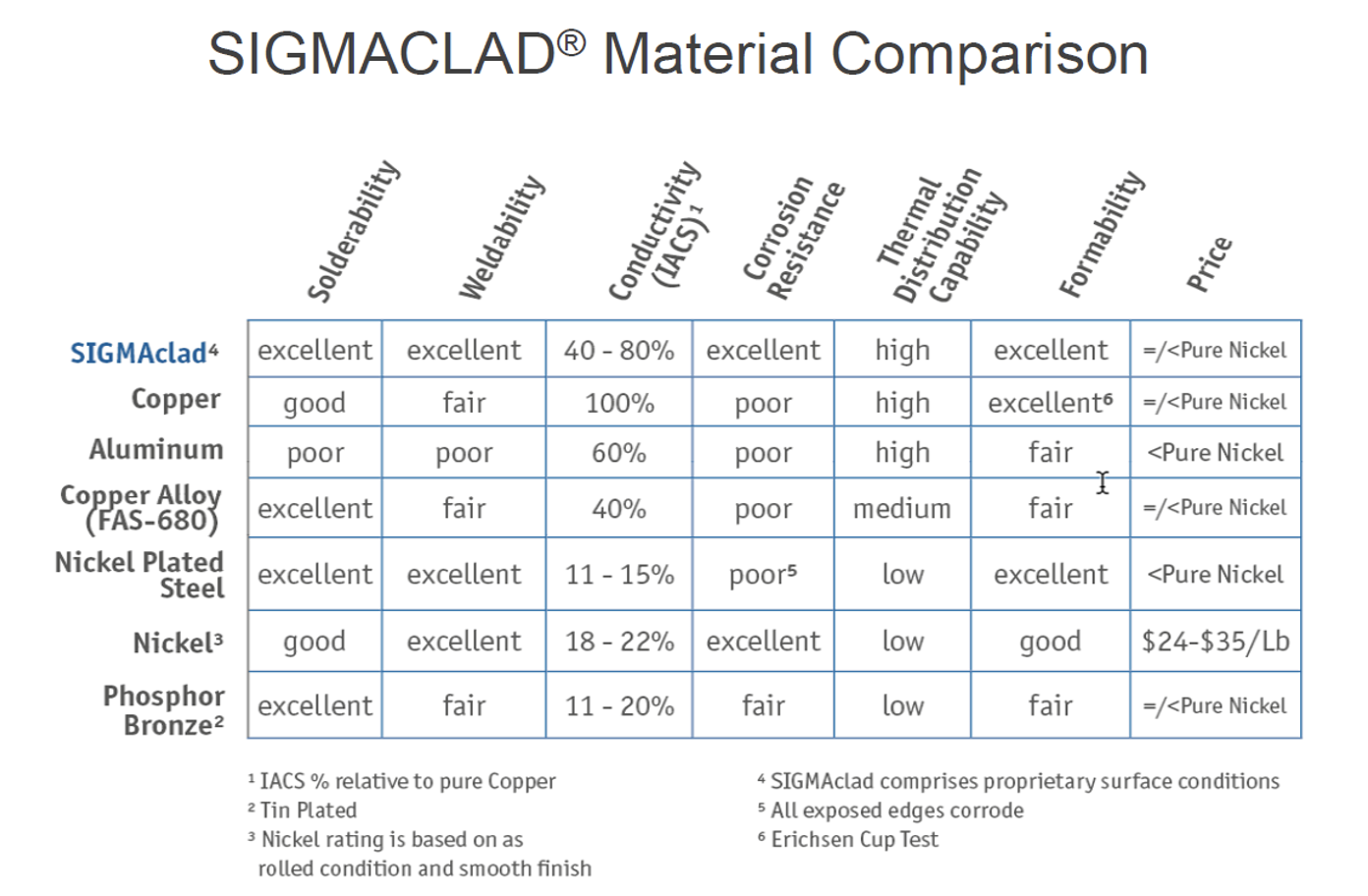
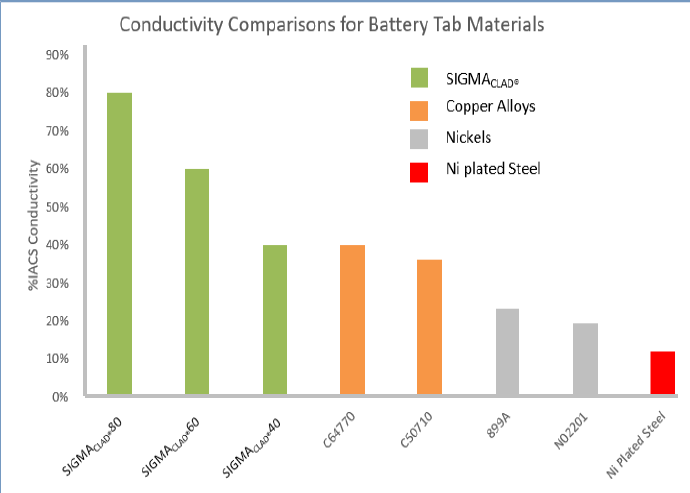
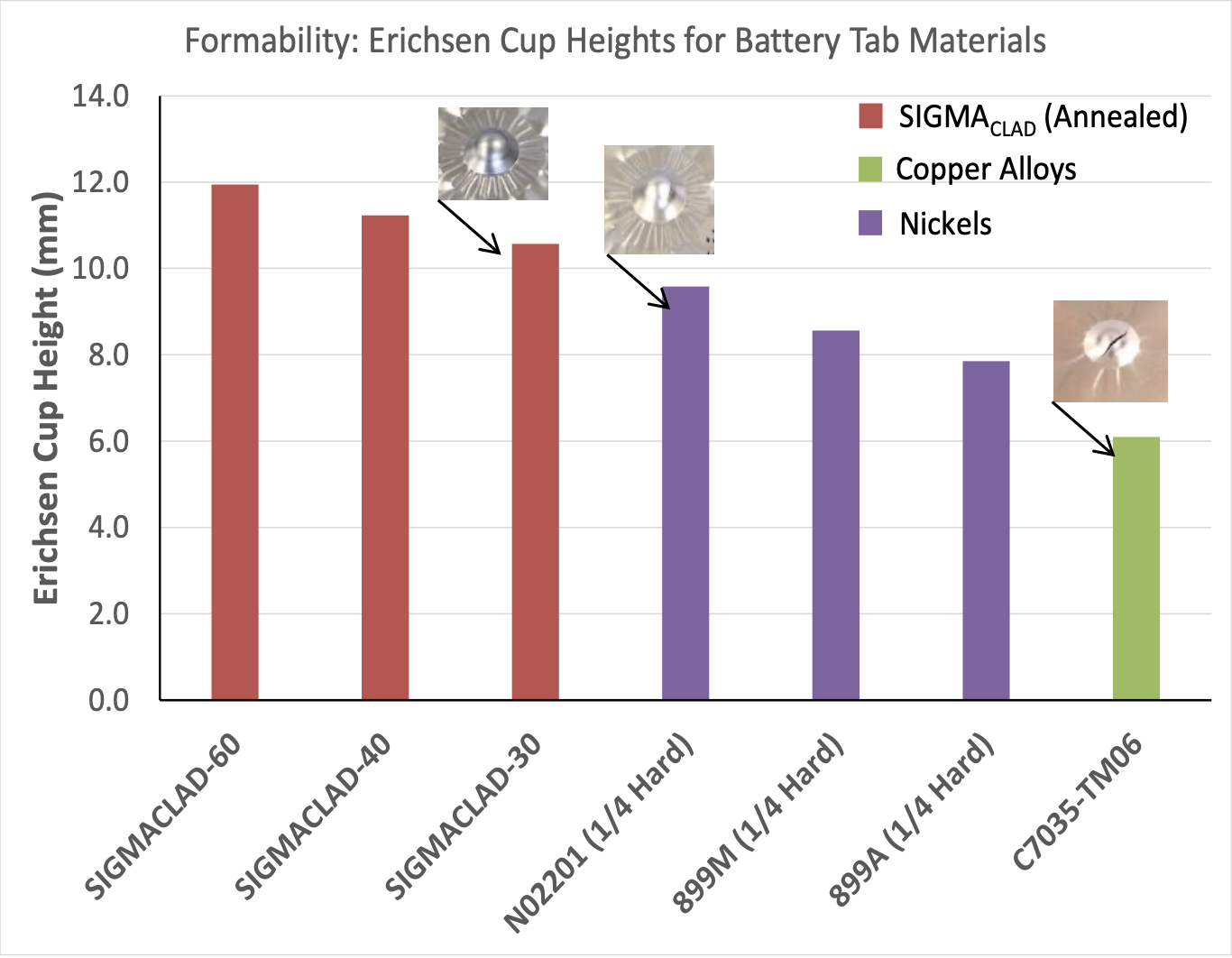
Welding Illustration
SigmaClad can be welded using resistance to join cell connectors in lithium-ion battery packs. For resistance welding, either parallel or step welding configurations can be used:
- Parallel Welding- Suitable for thinner gauges. Requires anti-shunting features to avoid shorting.

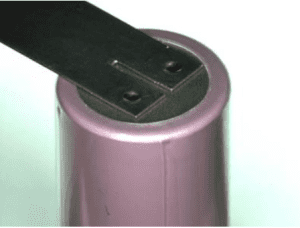
- Step Welding- Preferred for thicker gauges. No anti-shunting is needed. Lower weld power.
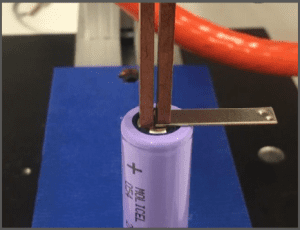
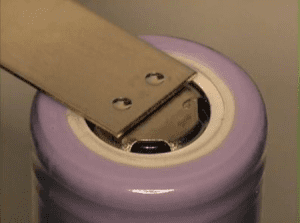
SigmaClad’s composition and properties allow flexible welding approaches to manufacture robust, low-resistance electrical connections in lithium-ion battery packs. The stainless-steel layers in SigmaClad promote excellent weld strength. With the proper joint design, SigmaClad achieves high mechanical and electrical integrity welds to battery terminals.
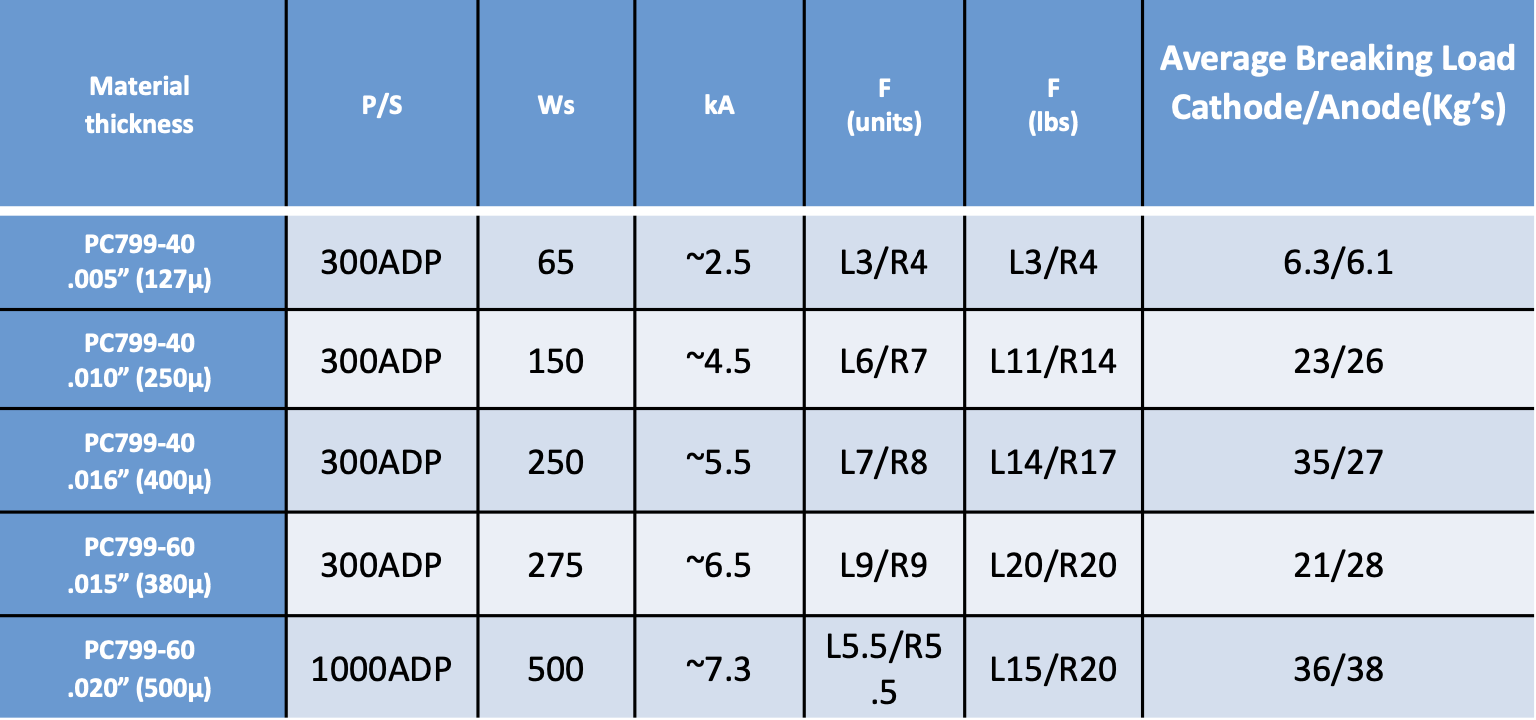
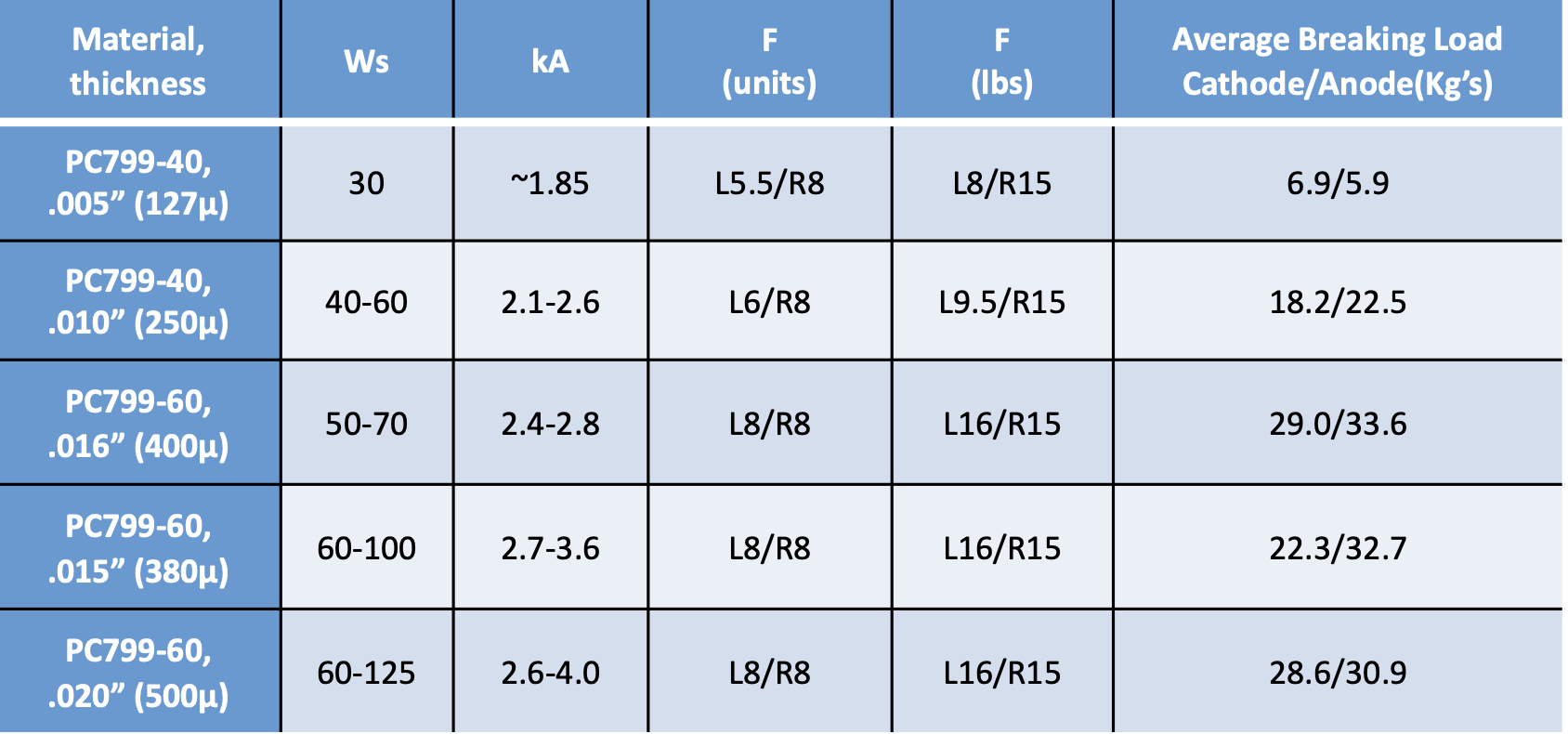
Therma Characterization
SigmaClad test samples were discharged at 300A in still air conditions along with nickel and nickel/copper interconnect samples for comparison. A FLIR thermal imaging camera monitored temperature profiles.
45 18650 lithium-ion cells were configured into a brick with interconnect endplates. The three material endplates were:
- a) 0.254mm thick nickel
- b) 0.254mm nickel + 0.254mm copper welded assembly
- c) 0.508mm thick SigmaClad 60
This allowed direct thermal performance comparisons of SigmaClad versus conventional nickel and nickel/copper materials.
The FLIR imaging after 5 minutes of 300A discharge showed significantly lower temperatures for SigmaClad:
– SigmaClad (PC799-60) peak temperature: 36°C
– Nickel peak temperature: >150°C (exceeded camera range)
– Nickel/Copper peak temperature: 54.5°C
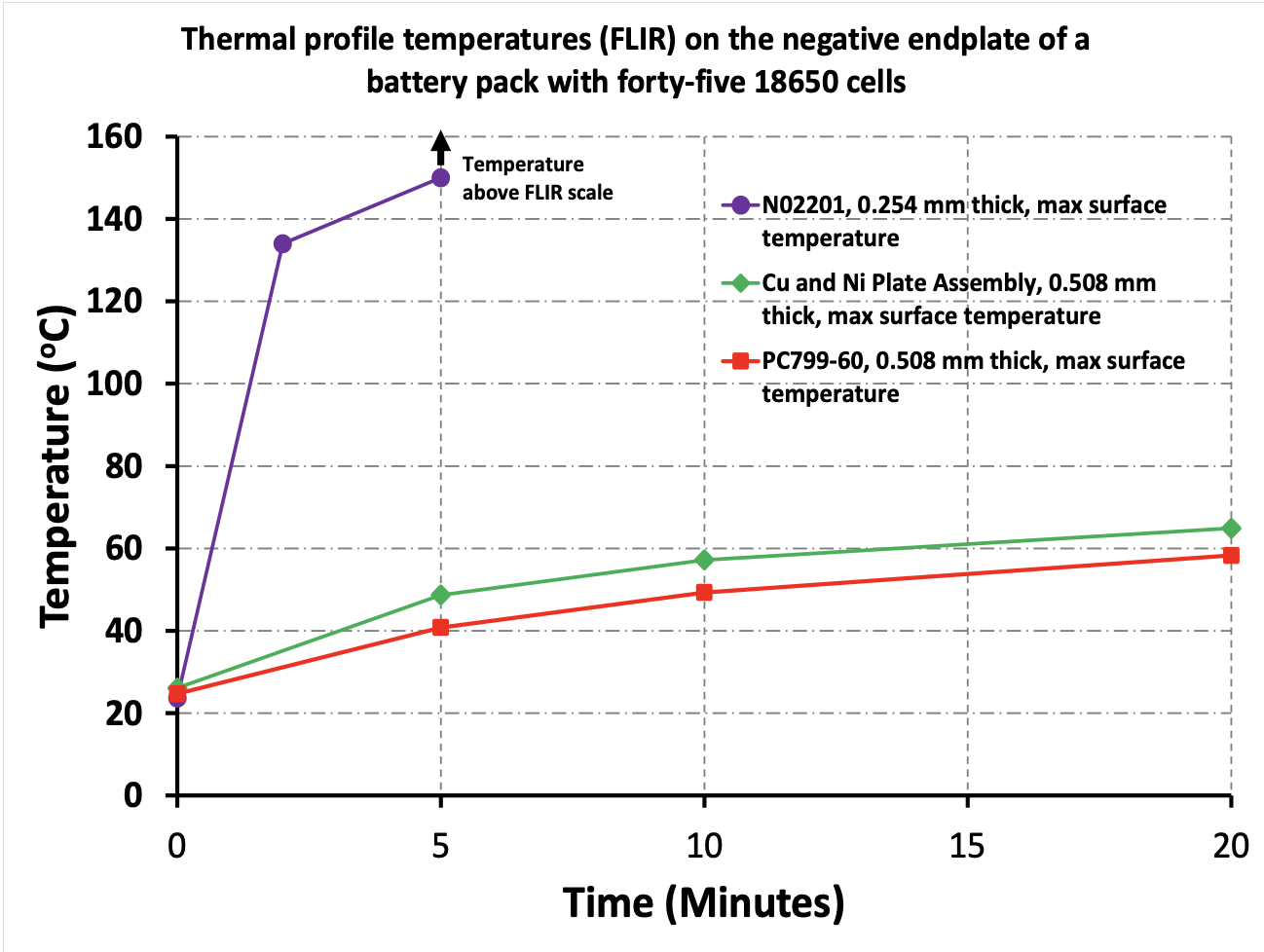
In addition to a lower peak reading, SigmaClad showed more uniform temperatures across the entire surface compared to large hot spots with nickel and nickel/copper.

Furthermore, the nickel and nickel/copper interconnects exhibited visible warping due to non-uniform thermal expansion. In contrast, SigmaClad maintained its shape and integrity.
This demonstrates the substantial thermal conductivity advantage of SigmaClad over incumbent materials. The superior heat spreading capability results in lower operating temperatures.
Corrosion Analysis
Connector corrosion in lithium-ion battery packs can increase electrical resistance and impedance rise, degrading performance over time. As such, corrosion characterization is important when evaluating new interconnect materials.
To analyze corrosion performance, SigmaClad samples were subjected to accelerated corrosion testing and compared to pure nickel and copper alloys.
The samples went through 60 cycles of:
– 24-hour immersion in ASTM B117 salt fog
– 24 hours in a humidity chamber at 55°C and 95% relative humidity
– 4 hours drying
This simulates prolonged exposure to salty, humid conditions.
After 60 corrosion cycles, the materials showed noticeably different results:
– SigmaClad had minimal corrosion, with no pitting or red rust
– Nickel also showed high corrosion resistance
– Copper alloys exhibited severe corrosion and discoloration
The nickel layers in SigmaClad (PC799-40) provide excellent barrier protection from corrosion agents. This prevents the copper core from being affected.
In contrast, the copper alloys underwent significant surface degradation and oxidation when unprotected.
The accelerated corrosion testing results demonstrate SigmaClad’s superior long-term corrosion resistance compared to copper alloys. SigmaClad performs similarly to high-purity nickel in resisting corrosion.
By preventing surface degradation, SigmaClad maintains low electrical contact resistance in battery interconnects over time. This enhances the lifetime and reliability of lithium-ion battery packs exposed to humidity and contaminants.
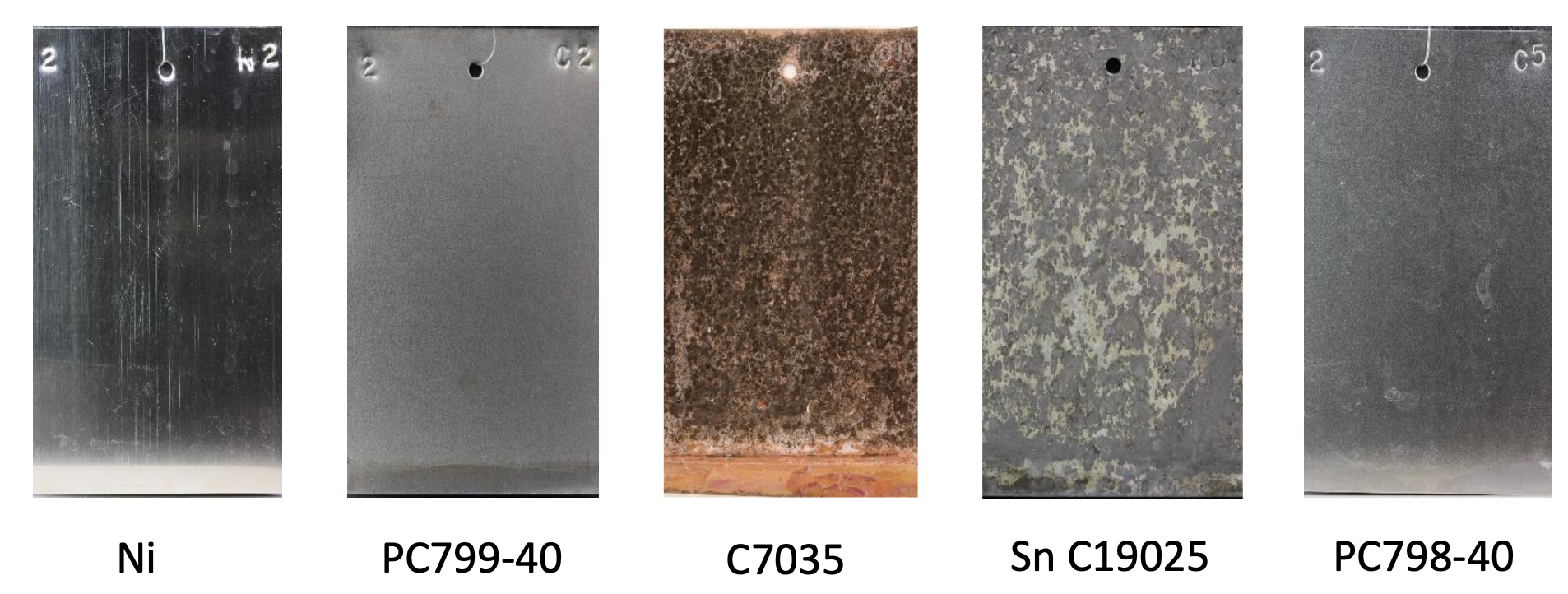
Here are some key points on how SIGMACLAD is better than nickel for battery connectors:
– SIGMACLAD has up to 3 times higher electrical and thermal conductivity compared to nickel. This significantly reduces resistive heating and keeps connector temperatures lower.
– The superior conductivity enables using a thinner gauge SIGMACLAD while maintaining equivalent performance. This can reduce material costs.
– SIGMACLAD’s stainless steel layers create excellent weld strength and integrity when joining to battery terminals.
– The exterior nickel layers provide corrosion resistance and allow direct soldering without plating pretreatment.
– Lower operating temperatures with SIGMACLAD improve battery efficiency and cycle life. Heat is a major detrimental factor for lithium-ion cells.
– SIGMACLAD’s improved thermal performance reduces hot spots and temperature gradients across the battery pack, enhancing safety and reliability.
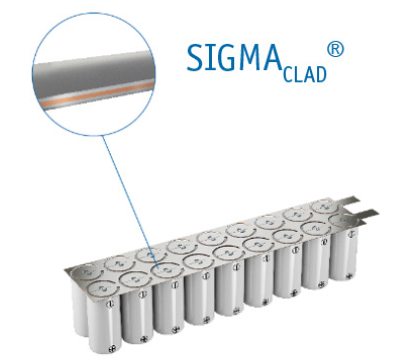
Transitioning battery connectors to specialist materials like SIGMACLAD will be key to improving safety, efficiency, and performance as lithium-ion batteries continue displacing legacy technologies. With enhanced battery technology, electric vehicles can fulfill their promise of efficient and ecologically sustainable transportation. In summary, SIGMACLAD’s optimized combination of electrical, thermal, mechanical, and corrosion properties make it a better-performing and more cost-effective option than nickel for lithium-ion battery interconnects. The advantages lead to cooler, safer, longer-lasting, and potentially cheaper battery packs.
Read More:- Top Lithium-ion Battery Manufacturers in India








